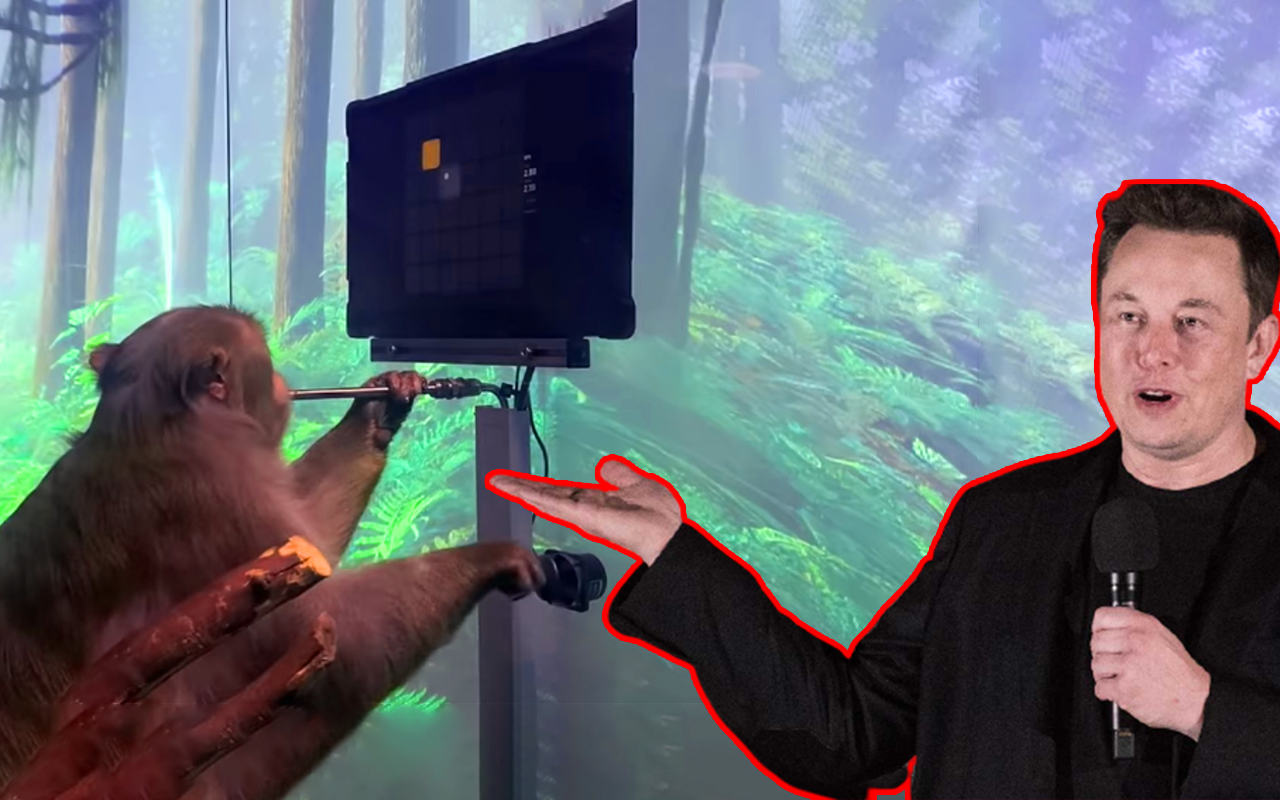
Elon Musk was given the opportunity to show off his monkey for the first time.
Musk’s Neuralink, which develops artificial intelligence-powered microchips for use in people’s brains, posted a video on Thursday that appeared to show a monkey using the technology to play video games like “Pong.”
Musk has previously boasted of Neuralink’s primate experiments, but this is the first time the firm has shown one. Musk said in a 2019 presentation that his business had enabled a monkey to “control a computer with its brain.”
The corporation performed a live demonstration of the technology in a pig named Gertrude in August 2020.
The monkey, called Pager, had a chip inserted in his brain six weeks ago, according to Neuralink. He was given a joystick that was connected to a video game in which he had to shift a mouse to a colored square in the video. When he pushes the cursor successfully, he is given a banana smoothie through a funnel.
The Neuralink chip tracks Pager’s brain function when he uses the joystick and sends it to a computer to examine what his brain does as he raises his hand. The machine’s controller is then disconnected, but the monkey manages to play the game using brain impulses transmitted by the Neuralink chips.
The same technology could theoretically be used to allow people control of artificial limbs with a Neuralink brain implant. Musk said the first Neuralink product would enable people with paralysis to control a smartphone in a tweet on Thursday.
First @Neuralink product will enable someone with paralysis to use a smartphone with their mind faster than someone using thumbs
— Elon Musk (@elonmusk) April 9, 2021
While having primates to control video games using neural interfaces was not new, according to Andrew Jackson, a neuroscience expert, and professor at Newcastle University, similar demonstrations were performed in 2002; he said it was a successful technology test.
“It makes sense to aim a new telescope where you know what you’ll see first,” he said. “As a result, they’re going about validating their device in a really sensible way. I’m confident that this technology will help scientists make new developments in the future (especially if it’s made readily accessible to scientists), as well as improve the accessibility of current neural interface technologies for people with paralysis.”
The engineering of the system, which was inserted wirelessly in Pager’s skull, was a significant development, according to Jackson.
“What’s obviously revolutionary and groundbreaking is that there are no wires coming into the skin, that all of the brain impulses are transmitted wirelessly,” Jackson said. “This, in my opinion, is the breakthrough here, and it’s critical both for improving the safety of human applications (wires across the skin can be a source of infection) and for improving the health of animals used in neuroscience research. In this respect, the Neuralink team has made significant progress.”




